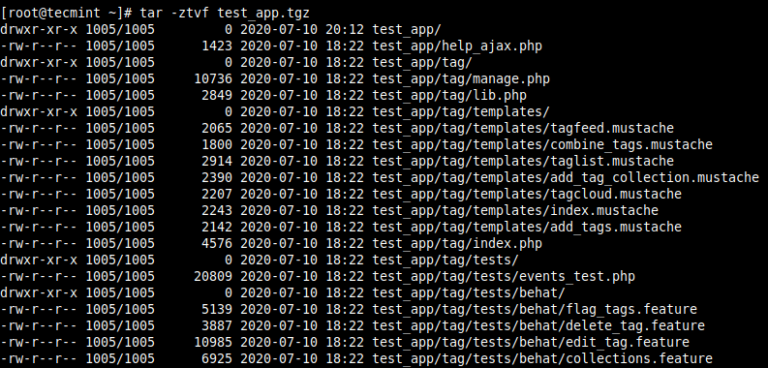

If you are looking for additional helpful solutions, you might want to check out this How to Open Files as Root article. Hopefully this section has helped you unpack, open, or extract those compressed tar files you downloaded from the internet. NOTE: You can specify a different directory to extract to using the -C parameter and path to the directory as follows: tar -C /myfolder -zxvf file_ (replacing file_ with the actual name of your file)

Choose Extract Here to extract all files to the current directory. Then, right click on the file and use either Extract Here to extract the contents in your present location, or Extract To to pick some other destination. (Making sure to replace file_name.tar with the actual filename) In your environment’s file manager, navigate to the location of your tar file that you want to open.
#Tar to untar in linux archive
The following examples cover how to untar both popular formats and extract the contents of the compressed archive to a different directory. So, knowing how to open these compressed files becomes very important. Many of the most popular downloadable Linux or Unix files found on the internet are compressed using a tar or tar.gz compression format. This is supposed to become the official way of doing it in the near future, so it may be a good idea to get to know 'bzip2'How to Extract or Open a Tar file in Linux. When you compile a kernel (create a custom kernel for yourself from source) there is an option to create a bzipped kernel. As a matter of fact, the Linux kernel source package, usually comes \'bzipped\'. There is also another tool that is rapidly gaining acceptance in the Linux world: bzip2. There are some differences in options for more advanced users. The compression factor is supposed to be a little better. This is supposed to become the official way of doing it in the near future, so it may be a good idea to get to know 'bzip2'įor all practical purposes you would use this tool in the same way as you would 'gzip'.
tar -xvf < tararchive > < directory > If you want to extract multiple directories, then run the following command.The command structure is similar to the section above. As a matter of fact, the Linux kernel source package, usually comes "bzipped". Assuming the tar archive at your hand contains a directory or more, you can manually tell tar which directory to extract. Consult the man file ( man zip) for specific instructions on using this tool. 7 thoughts on How to preserve Symbolic links with tar command in Unix/Linux. Categories Linux Tags How To, Red Hat 5 and 6, tar. You can also use unzip if someone gives you a file compressed with 'zip'. How to extract files to different directory using tar in Unix/Linux How to create Soft Link and Hard Link in Linux.

#Tar to untar in linux windows
If you're planning on compressing files to give to someone who (still) uses the Windows operating system, this might be your best bet. One of these is zip, famous in the MS-DOS/Windows world. Most Linux distributions come with other tools to compress files. These commands are good if you've just zipped a regular file (not a tarball).


 0 kommentar(er)
0 kommentar(er)
